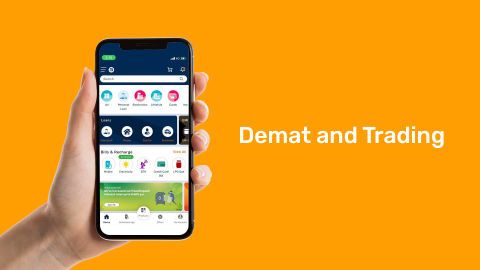Currency options
Currency options are financial instruments widely used by traders to hedge against adverse currency movements or anticipate exchange rate fluctuations. Using them, traders can manage currency risk effectively while potentially maximising profits. Let us understand currency options in detail and learn how you can trade them.
What are currency options
Currency options (also known as forex options) are financial instruments that give the holder the right but not the obligation to buy or sell a currency at a predetermined exchange rate (the strike price) on or before a specified date (the expiration date).
Primarily, investors use them to hedge against or anticipate movements in exchange rates in the foreign exchange (forex) market. They protect against adverse currency movements while also offering speculative profit opportunities.
Now, let us build our foundational knowledge by learning some common currency options terminologies.
Common forex options terminologies
Strike price
- The price at which the currency pair can be bought or sold when the option is exercised.
- It determines the exchange rate at which the option holder can:
- Either buy (call option)
or - Sell (put option) the underlying currency
- Either buy (call option)
Expiration date
- This date marks the end of the validity of the options contract.
- After the expiration date, it is no longer active.
- Once the expiration date passes, the option holder loses the ability to exercise their right to buy or sell the currency.
Premium
- The premium is the amount paid by the option buyer to the option seller (writer).
- In exchange, the buyer gets the right to buy or sell the currency.
- It represents the cost of purchasing the option.
Currency options represent just one among several options available in the market. Read the article “what are options” and enhance your knowledge. Also, learn the process of selling options and optimise your trading decisions.
ITM vs. OTM
“In the money" (ITM) and "out of the money" (OTM) are terms used to describe the relationship between:
- The strike price of an option and
- The current market price of the underlying asset
They indicate whether an option is currently profitable (ITM) or not (OTM) based on the current market conditions. Let us see when they occur:
| Option type | In the Money (ITM) | Out of the Money (OTM) |
| For a call option | It happens when the current exchange rate is above the strike price. | It happens when the current exchange rate is below the strike price. |
| For a put option | It happens when the current exchange rate is below the strike price. | It happens when the current exchange rate is above the strike price. |
What are the different types of currency options
Let us have a look at the two major currency options available in the market:
European options
- European options can only be exercised on the expiration date.
- These options provide less flexibility compared to American options.
- These currency options are suitable for investors with less frequent trading needs.
American options:
- American options can be exercised at any time before or on the expiration date.
- This flexibility allows investors to maximise profits or mitigate losses based on market movements.
- American currency options generally command a higher premium compared to European options due to their flexibility.
How to do currency options trading
Trading currency options involves several steps. Let us understand how you can start from scratch:
Step I: Choose a brokerage firm
- Select a reputable brokerage firm that offers currency options trading services.
- Ensure the broker:
- Provides access to the forex options market and
- Offers a user-friendly trading platform
Step II: Open a trading account
- Follow the brokerage firm's account opening procedures.
- You will typically be required to:
- Provide personal information
- Verify identity, and
- Funding the account with the required minimum deposit.
Step III: Research
- Identify potential trading opportunities in the forex options market.
- Form a trading strategy by analysing:
- Currency trends
- Economic indicators
- Geopolitical events, and
- Market sentiment
Step IV: Choose the right currency pair
- Select the currency pair based on your market outlook and trading objectives.
- Some commonly traded currency pairs include:
- EUR/USD
- GBP/USD
- USD/JPY
Step V. Determine option strategy
- Decide on an option strategy based on your research and risk tolerance.
- Some common strategies include:
- Buying call or put options for speculation or hedging purposes
- Selling covered calls, or
- Practising complex strategies like straddles or strangles
Step VI: Place an order
- Place an order for the desired currency options contract.
- You will be required to specify the following:
- Type of option (call or put)
- Expiration date
- The strike price, and
- The quantity you wish to trade
Step VII: Close the trade
- Close out your option position before or on the expiration date.
- You can do any of the following:
- Exercise the option
- Sell it in the market to realise profits or cut losses
- Allow the currency option to expire worthless
How to trade using currency options
Let us understand better through a hypothetical example:
The scenario
- An investor observes that the Indian economy is showing signs of strengthening.
- They anticipate appreciation of the Indian rupee (INR) against the US dollar (USD).
- To capitalise, the investor decides to purchase USD/INR call options with a strike price slightly above the current exchange rate.
- They do so to profit from any upward movement in the currency pair.
The two possible outcomes
| Indian rupee appreciates as anticipated | Indian rupee depreciates or remains stable |
|
|
All major candlestick patterns explained in simple terms
Conclusion
Currency options are financial contracts that offer the right but not the obligation to buy or sell currencies. For investors, they offer flexibility and help them manage currency risk.
Through hedging strategies, investors can protect against adverse currency movements when engaging in international trade or investments. On the other hand, speculative strategies allow investors to profit from anticipated currency movements. Learn more about options and derivatives today and improve your trading outcomes.




